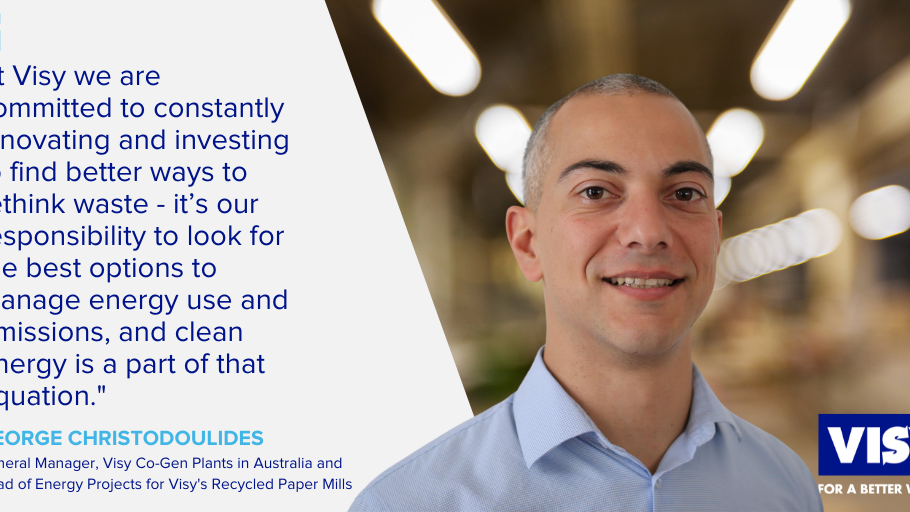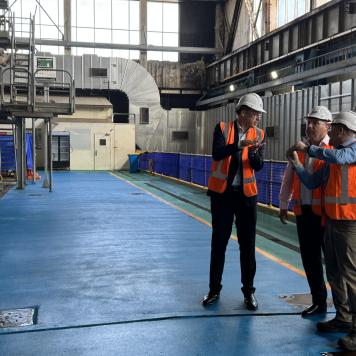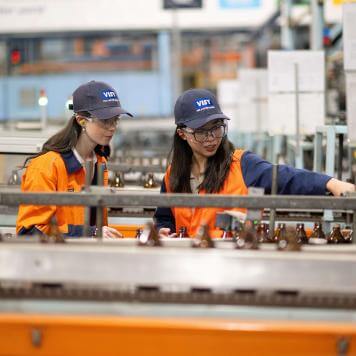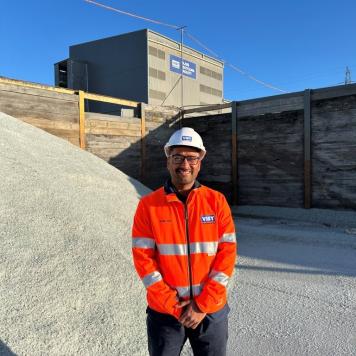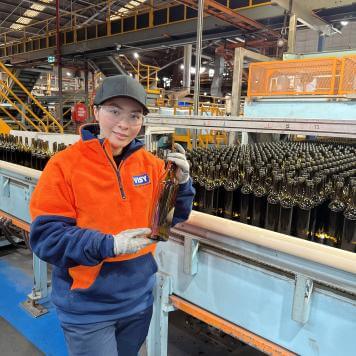As industries globally grapple with their environmental impacts, Visy’s long-term commitment to sustainable development has allowed us to pioneer the use of clean energy in the re-manufacture of recycled paper in Australia.
We chat with George Christodoulides, General Manager of Visy’s Co-Generation (Co-Gen) Plants in Australia and Head of Energy Projects for Visy’s Recycled Paper Mills, about how the plant is helping the company cut greenhouse gas emissions and reduce waste going to landfill.
Tell us a little about the Co-Gen plant in Victoria and how it came to exist.
Visy’s Co-Gen plant in Victoria was commissioned in November 2011, so is just over ten years old. Visy Chairman Anthony Pratt was visionary in applying this ‘energy from waste’ technology to the recycled paper mills Visy is operating in Victoria.
It’s the first time this '100% recycle mill rejects waste fuel to energy' technology has been integrated into a recycled paper mill in Australia and it’s only now – a decade later – that we see others in the industry putting similar projects through planning and construction across Australia.
How does the Co-Gen plant process work?
The plant sits physically between two recycled paper mills – VP4 and VP5.
Think of thousands of tonnes of used paper and cardboard, collected from household and business recycling bins across Victoria, being processed through the mills each day and re-manufactured back into paper. Although the used paper and cardboard has been through some preliminary sorting, there is waste – contaminated fibre and non-fibre products – that are rejected from the re-manufacturing process. Historically this waste would be sent to landfill.
The Co-Gen plant allows us to divert the rejected material away from landfill and use it to create both steam and electricity – hence the name cogeneration, as the plant is making two types of energy. The steam is used in the paper manufacturing process to dry the paper, while the electricity is used to run the paper-making machines.
What sustainability benefits does this result in?
The environmental benefits are two-fold.
Firstly, by using waste to create energy, Visy’s Co-Gen plant in Victoria prevents that material from going to landfill. When organic waste is sent to landfill it decomposes and creates greenhouse gases. By keeping this material out of landfill in Victoria we avoid the creation of approximately 34,800 tonnes of carbon dioxide equivalent greenhouse gas emissions annually.
Secondly, by using waste as an energy source, rather than natural gas, the Co-Gen plant in Victoria saves approximately 9,800 tonnes of carbon dioxide equivalent greenhouse gas emissions annually.
This means, in total, we’re keeping the equivalent of approximately 7,440 passenger vehicles off the road every year*.
What next for the Co-Gen plant?
We’ve made great gains in performance of the Co-Gen plant over the past years. Every year we’ve seen a step change in performance and we’re now producing a third more steam than we were five years ago.
We’ll continue to look for constraints to performance and identify ways to overcome those issues. Our global footprint gives us access to the latest insights and technologies, and the ability to continue to unlock unrealised value.
Do you think we will see an increase of similar clean energy plants across Visy and the wider industry?
Generating energy from a waste source makes absolute business sense. From a business perspective, landfill prices are increasing as are energy prices.
Our planned upgrade to our recycled paper mill in Queensland will enable us to use the waste from the mill, or mill rejects, as fuel reducing our need for coal. Mill rejects are a lower emissions intensive fuel and will support us to reduce our greenhouse gas emissions. The project is expected to be completed by the end of 2022.
And with the increasing focus on net zero carbon emissions globally we are only going to see more of this type of investment in the future. At Visy we are committed to constantly innovating and investing to find better ways to rethink waste - it’s our responsibility to look for the best options to manage energy use and emissions, and clean energy is a part of that equation.
It’s an exciting vision to be a part of and we’re fortunate to have been ‘home-growing’ our expertise in the clean energy area for the past decade.
* Based on an average of 6T of greenhouse gas emissions per vehicle per year
